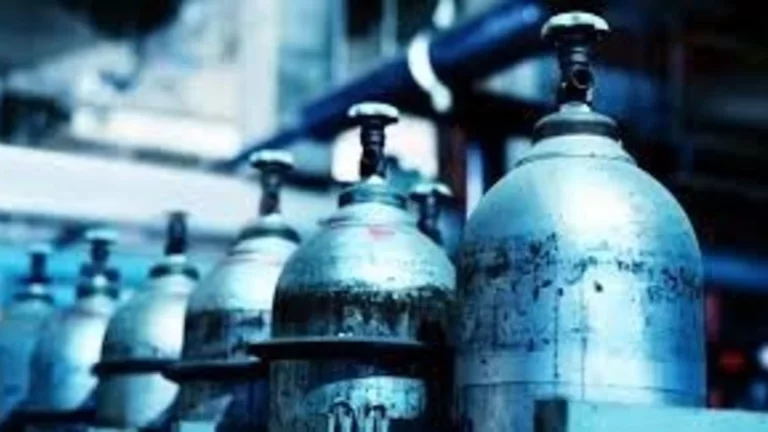Exploring Liquid Oxygen: Applications, Benefits, and Safety Considerations

Due to its adaptability and distinct characteristics, liquid oxygen has carved a niche in a wide range of sectors. Advancement and development across various spheres, from medicine to functioning processes, is nearly impossible without such a concentrated degree of oxygen.
In this post, we will discuss its uses, advantages, and most crucially, safety factors so that you can appreciate its importance.
What Is Liquid Oxygen?
Liquid oxygen is simply oxygen that is subjected to arctic temperatures so as to become a faint blue liquid. Its dynamic and physical characteristics render it appropriate for use only in specially designed cryogenic tanks for containment and transportation purposes. This form has a very strong packing and consumption efficient properties hence widely acceptable in many industries.
Oxygen Applications in Different Industries
The unique properties of liquid oxygen allow it to cater to a diverse range of needs:
1. Medical Oxygen for Healthcare
In hospitals, clinics and emergencies, liquid oxygen found in storage cylinders is converted to medical oxygen. It is essential in:
- Therapeutics using oxygen for treatment of different respiratory conditions.
- Lifesaving equipment and beds in operating theaters and intensive care.
- Facilitating the use of ventilators in critical care of patients.
With the increasing demand for medical oxygen, the availability of high-purity liquid oxygen guarantees an uninterrupted supply that conforms to the set standards.
2. Industrial Oxygen for Manufacturing and Processing
Liquid oxygen serves as a critical resource in industries such as:
- Steelmaking: Achieving higher combustion rates and improving overall productivity.
- Chemical Manufacturing: Serving as the reactant or even catalyst transforming it in chemical operations.
- Aerospace: Dedicating fuel to the systems of rocket engines.
Its use as industrial oxygen underpins many advancements in engineering and manufacturing, driving innovation.
3. Other Unique Applications
Not limited to the healthcare and industrial sectors, liquid oxygen has other industrial applications such as:
- Efforts to Preserve the Environment: Enrichment of water bodies to control the problem of eutrophication.
- Laboratory Applications: Used in sectors such as research that requires the use of high-grade oxygen.
- Power Generation: Use in systems designed to synthesize and store hydrogen fuel.
It can be seen that these applications of oxygen cut across and solve many issues faced by humanity today.
Benefits of Liquid Oxygen
1. Efficiency in Storage and Transport
In comparison, liquid oxygen requires significantly less volume as compared to gaseous oxygen which makes it convenient for large-scale storage and transportation.
2. High Purity
The liquefied oxygen is of unparalleled purity which is very important in the sector of medicine and industrial use where there is a high need for precision.
3. Versatility
The stock’s versatility is demonstrated by its ability to meet the needs of various sectors, including healthcare and space exploration.
Safety Considerations for Liquid Oxygen
The presence of liquid oxygen serves a variety of purposes; yet, its management is subjected to rigid laws of safety:
- Precautions for Storage: Keep in issue in dewar flasks so as not to facilitate rapid evaporation or spillage.
- Materials That Will Burn Should Be Avoided: Liquid oxygen is swifter in the combustion of otherwise non combustible contents. This means it should never ever be exposed to oil, grease or any other easily ignitable material.
- Protective Equipment: Any person that comes into contact with this should have gloves, goggles and other protective wear since it can cause frostbites as well as burns.
It is important to undergo training before deciding to work with liquid oxygen in order to reduce the dangers posed by these substances and enhance safety when working with them.
Air Liquide: Pioneering Liquid Oxygen Solutions for Industries and Healthcare
Air Liquide is a global leader in providing liquid oxygen solutions, serving industries and healthcare with unmatched expertise and innovation. As a trusted partner, Air Liquide supplies high-purity liquid oxygen essential for various applications, from medical oxygen for hospitals and life support systems to industrial oxygen for manufacturing and environmental solutions.
Their advanced technologies ensure efficient storage, safe transportation, and seamless integration into client operations. With a strong focus on safety, sustainability, and reliability, Air Liquide continues to play a pivotal role in delivering liquid oxygen that powers progress across diverse sectors.
Air Liquide and Liquid Oxygen: Services Offered
- Medical Oxygen Solutions:
- Supply of high-purity liquid oxygen for hospitals, clinics, and emergency services.
- Reliable systems for oxygen therapy and life support.
- Industrial Oxygen Services:
- Delivery of industrial oxygen for steelmaking, chemical manufacturing, and other industries.
- Customized solutions to enhance production efficiency and environmental efforts.
- Advanced Storage and Transport:
- Specialized cryogenic tanks for safe storage of liquid oxygen.
- Efficient logistics systems to ensure secure and timely delivery.
- Commitment to Safety and Sustainability:
- Adherence to strict safety protocols for handling liquid oxygen.
- Innovative technologies to reduce environmental impact while meeting client needs.
Liquid oxygen is a useful element that drives progress in many fields. Its uses range from lifesaving medical oxygen, to industrial-grade oxygen used for pushing processes in factories – it has many applications and is impactful. However, its advantages come at a cost, especially in the context of safety.
For any business that is considering the use of oxygen in liquid state, the primary factor that should be examined prior to getting the fill liquid oxygen tanks is the understanding of the liquid oxygen uses and liquid oxygen safety practices. Be it medicine, manufacturing, or science, using liquefied oxygen can elevate the production levels but one has to use it sensibly.